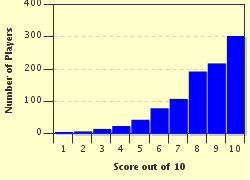Quiz Answer Key and Fun Facts
1. Where in Europe is the Netherlands located?
2. The Dutch flag is formed from the colours red, white and blue; so why is orange a national colour?
3. The Dutch have a proud maritime history, still evidenced by the fact that the Kingdom of the Netherlands includes the Caribbean islands of Aruba, Sint Maarten and Curaçao. Which other island nation, upon whose land the Dutch were the first permanent settlers, was named after Prince Maurice, Stadtholder of the United Provinces of the Netherlands, in 1598?
4. You say the Netherlands; I say Holland. The provinces of North Holland and South Holland form a constituent part of the Netherlands, two out of twelve provinces. Which of these is NOT one of the other ten?
5. Through much of the twentieth century, the word "verzuiling" (pillarisation) was used to describe which of these aspects of Dutch life?
6. Many economists look to the Netherlands for the first example of a speculative bubble, a situation where the price of a traded commodity rises to abnormally high levels and then collapses almost instantaneously. This occurred in the 1630s around which of these Dutch icons?
7. Amstel lager is a Dutch beer brewed by Heineken and exported across the world. Who or what is Amstel?
8. The Netherlands is renowned as an exporter of cheeses, but which cheese is responsible for 50%-60% of total annual production?
9. Clogs have long been regarded as traditional Dutch footwear. Which of the following factors explains why wooden shoes have been so appropriate in the Netherlands?
10. The phrase "Let's go Dutch" (or "Dutch treat") did not originate in the Netherlands but from an external stereotype of the Dutch people. Which of the following best describes the perception behind that stereotype?
Source: Author
glendathecat
This quiz was reviewed by FunTrivia editor
Pagiedamon before going online.
Any errors found in FunTrivia content are routinely corrected through our feedback system.

